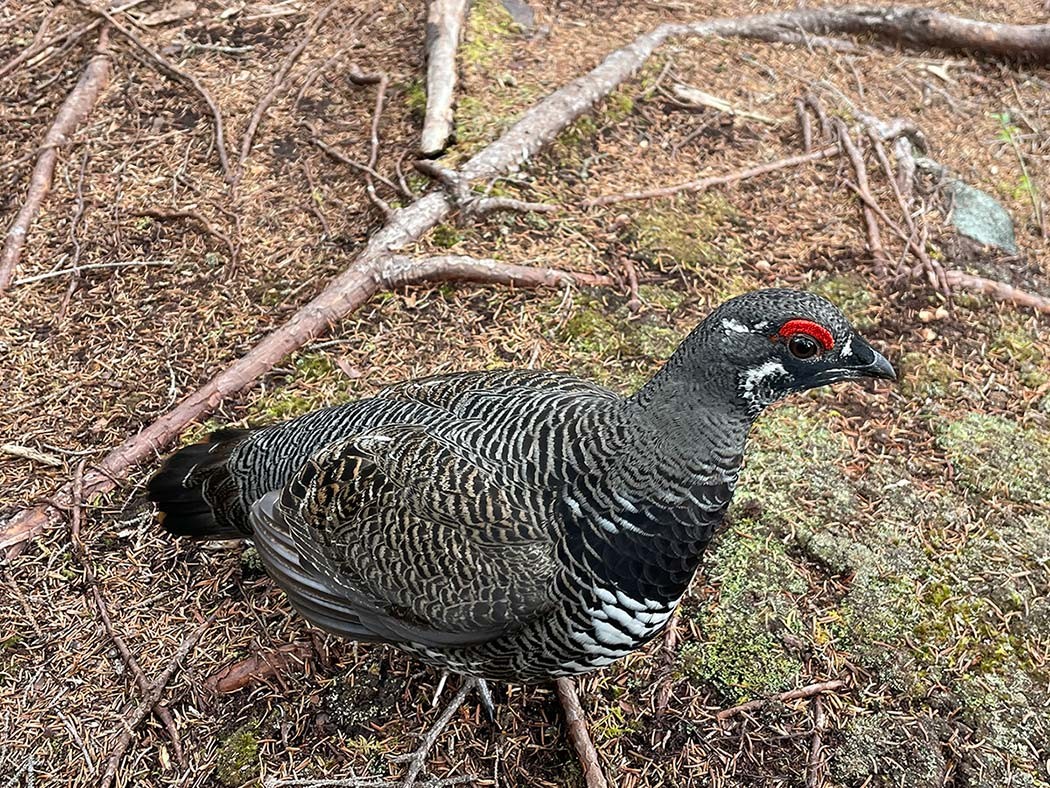Angelena Ross has been studying spruce grouse for more than 20 years, first as a graduate student at State University of New York at Potsdam and now for the New York State Department of Conservation. In New York’s Adirondacks region, spruce grouse are at the southern edge of their boreal forest range and have endangered status, due to forest fragmentation and habitat loss, including a shift toward older forests. As their name suggests, spruce grouse live in spruce-fir forests and bogs, where they eat conifer needles, shoots, flowers, and young cones. They prefer the tender tips of new growth, and thus tend to favor younger forests that are regenerating after fire or other disturbances.
Documenting the species’ decline led Ross to a translocation experiment. The hope was that introducing spruce grouse from healthy populations would help enhance genetic diversity and restore the population. Ross and colleagues from Clarkson University and SUNY Potsdam detailed their 7-year effort in the February 2023 issue of Journal of Wildlife Management. The process, repeated multiple times in both Maine and Ontario, involved capturing birds, screening them for disease, holding them for a few days in screened tents with a buffet of berries and evergreen boughs, outfitting them with radio transmitters, and transporting them in climate-controlled vehicles 12 hours or more to the release sites. The team also captured and collared 89 resident spruce grouse in the release sites. They then returned periodically to record locations of radio-collared birds, find their nests, count the eggs and young, and document mortality.
Ross and her colleagues discovered that translocated spruce grouse were able to establish stable home ranges, find mates, and locate appropriate nest sites. The birds contributed the same proportion of young to the next generation as resident spruce grouse. However, annual survival rates were lower for the translocated grouse, which the researchers attributed to stress during handling and transportation. They noted that future efforts should minimize the time spruce grouse are held in captivity and transit, and involve as little handling of the birds as possible. The team also documented incidents of hunters who misidentified spruce grouse for ruffed grouse, killing six translocated and two resident spruce grouse. This outcome suggests a need for educational outreach to hunters. Despite these losses, the experiment results showed that translocation is indeed a feasible method of recovering the spruce grouse population in New York, and demonstrated the value of post-release monitoring of movements, survival, and reproduction to evaluate success.


